Apple iPhone 15 review: the best for most people
The entry-level iPhone could be your perfect upgrade

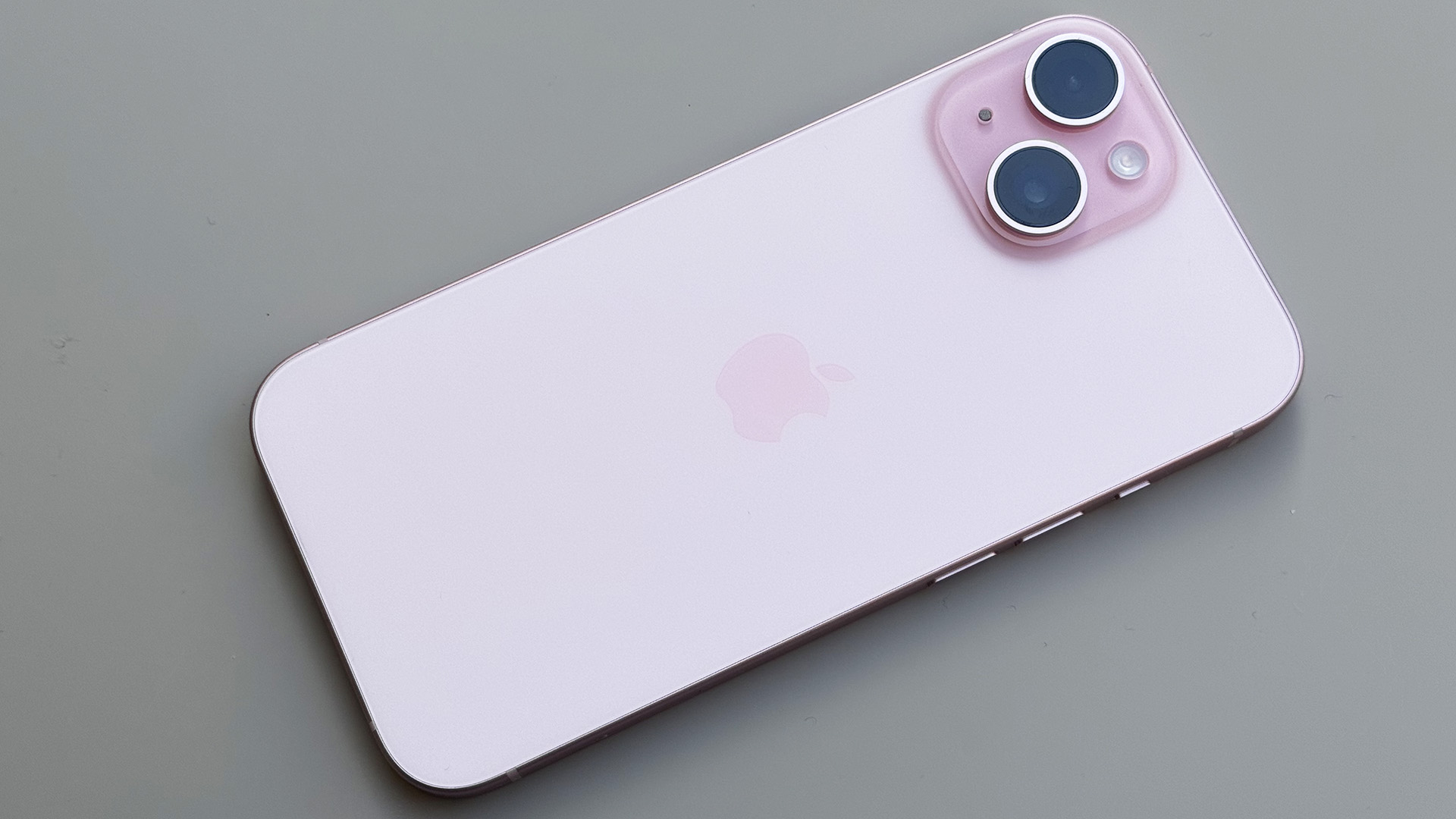
While the iPhone 15 might not have the advanced features of the pro model, it’s an impressive phone that feels great in the hand. Not only is it powerful, thanks to the A16 Bionic chip but the new 48MP camera means it takes incredible photos too.
-
+
Great-looking device
-
+
Feels solid and well made
-
+
Impressive performance
-
-
Lacks always-on display
-
-
Some users may miss a long lens
-
-
Slower USB 2 transfer
Why you can trust T3

The iPhone 15 is the entry point in the range. Both the smallest and the most affordable of the new range – aside from the iPhone SE which was launched back in March 2022. The iPhone 15 Pro Max, Pro and Plus are all still versions of the 15 but have either a larger display, more advanced features or both.
While the flagship Pro and Pro Max models may get all the glory for their feature sets, the iPhone 15 sets the base line for the range. There are many features that are shared across all phones and for the majority of users the standard iPhone 15 is more than enough phone.
That’s because this year’s iPhone 15 has made some big advances on the iPhone 14. The main rear camera is now a 48MP device, the chip is now the powerful A16 Bionic and it gets the Dynamic Island instead of the notch.
There are certainly features from the Pro models that it misses – namely the telephoto lens and always-on display – but there’s no denying that the iPhone 15 is a great phone. Having previously tested the Pro Max model, using the iPhone 15 is an adjustment but not as big an adjustment as I expected, and one that I actually enjoyed.
Yes, the iPhone 15 Pro Max might be the best iPhone, but there are users that I would certainly recommend the iPhone 15 to instead. As not everyone needs what the Pro models offer and for the money, the 15 might make more sense.
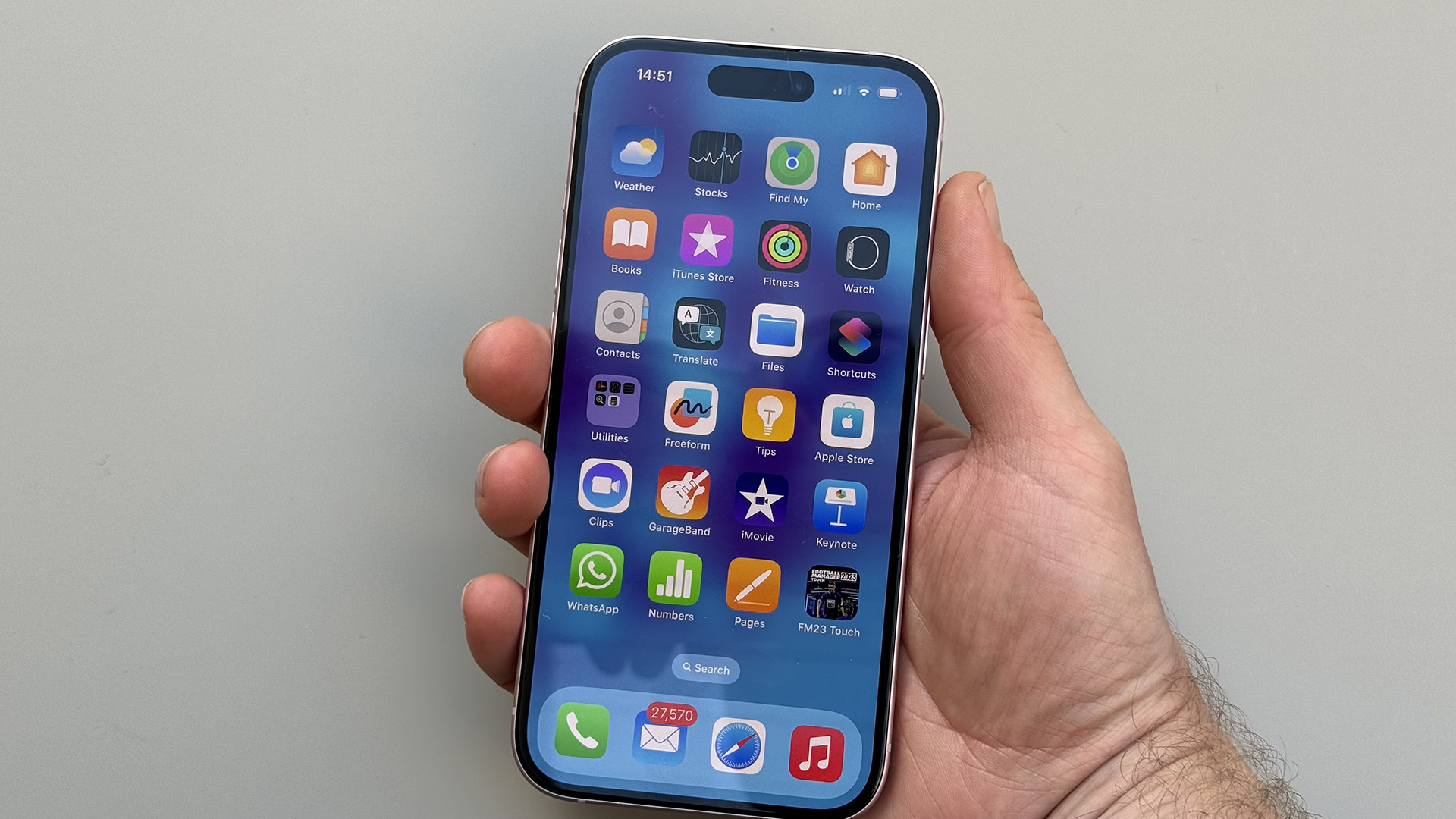
How much is the iPhone 15?
When it comes to price, the iPhone 15 makes a very tempting proposition. The starting price is £799 / $799 / AU$1499 for the 128GB model. It’s also available in 256GB and 512GB versions, if you need more local storage. Though if you subscribe to Apple’s iCloud storage packages, you are unlikely to need that. The top 512GB model here costs £1099 / $1099 / AU$2049.
The iPhone 15 Plus is also given as an option on the iPhone 15 page, which offers a larger 6.7-inch screen. This version is priced from £899 / $899 / AU$1649 to £1199 / $1199 / AU$2199.
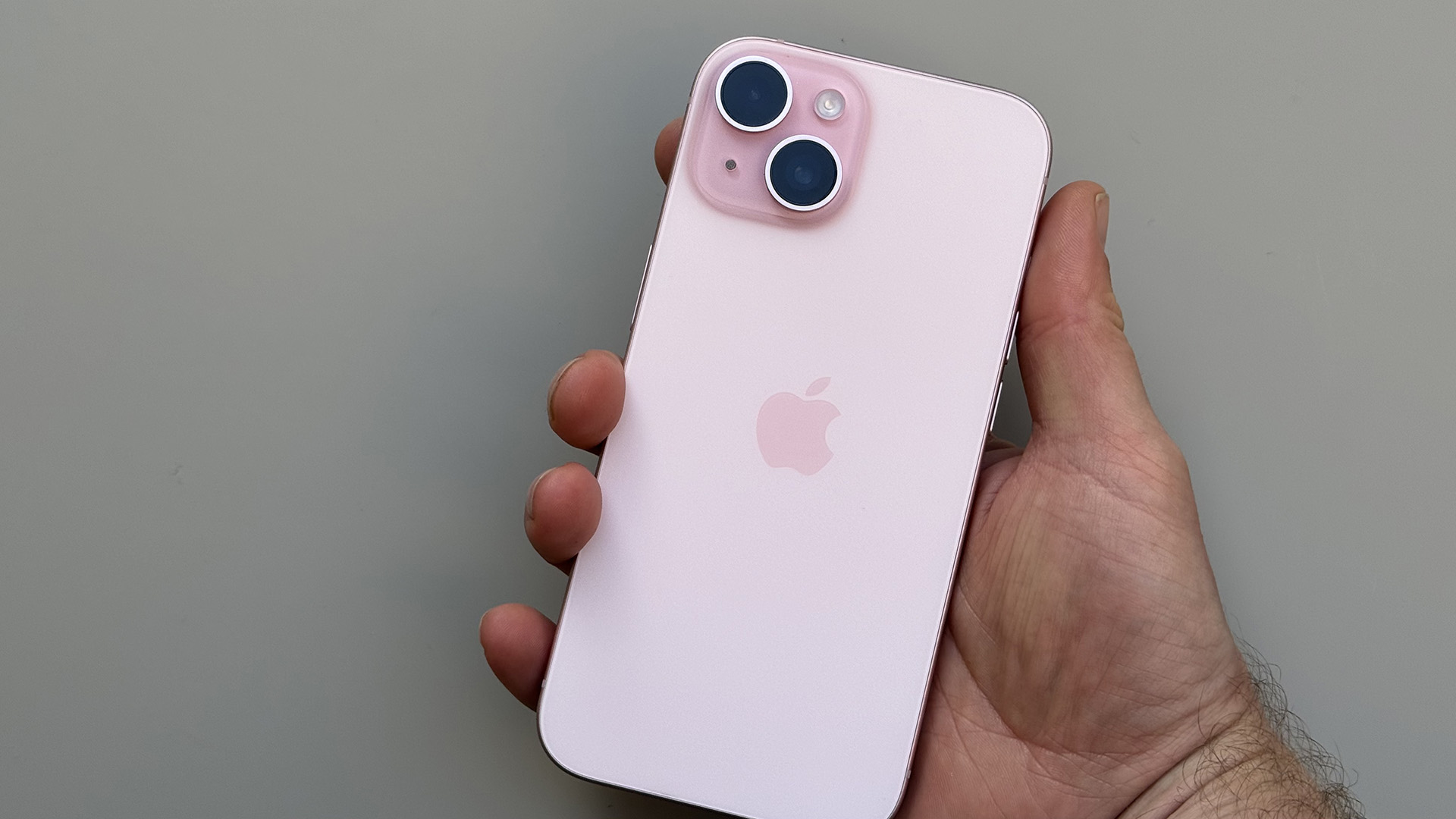
What's new on the iPhone 15?
There are a few upgrades I was really wishing for on the iPhone 15 and luckily a number of them came true. The big one is perhaps the introduction of the Dynamic Island. This was something first introduced to the iPhone 14 Pro models, and provided a software solution to the hole-punch positioning of the camera and sensors in the front display.
Get all the latest news, reviews, deals and buying guides on gorgeous tech, home and active products from the T3 experts
Rather than leaving these areas as dark holes, Apple turned this area into a hub for all notifications. The Dynamic Island is an elegant design solution – something that could only have come from Apple. Not only did the Dynamic Island distract from the camera and sensor holes, but it became a fun and useful feature. It became such a big part of using the iPhone 14 Pro models that it’s a relief to see it now available on all four new models.
On the iPhone 15, the Dynamic Island works in an identical way as before. It will show you an icon when the screen is locked, or your phone is on silent, it will show you an album thumbnail when you’re playing music and it will host updates from some of your favourite apps.
The second big change on the iPhone 15 is in the camera array. While last year saw the Pro models upgrade to a 48MP main camera, this year it comes to all models. Moving from a 12MP to a 48MP camera is a massive jump for the iPhone and not only means greater resolution but it provides the ability to offer an additional focal length.
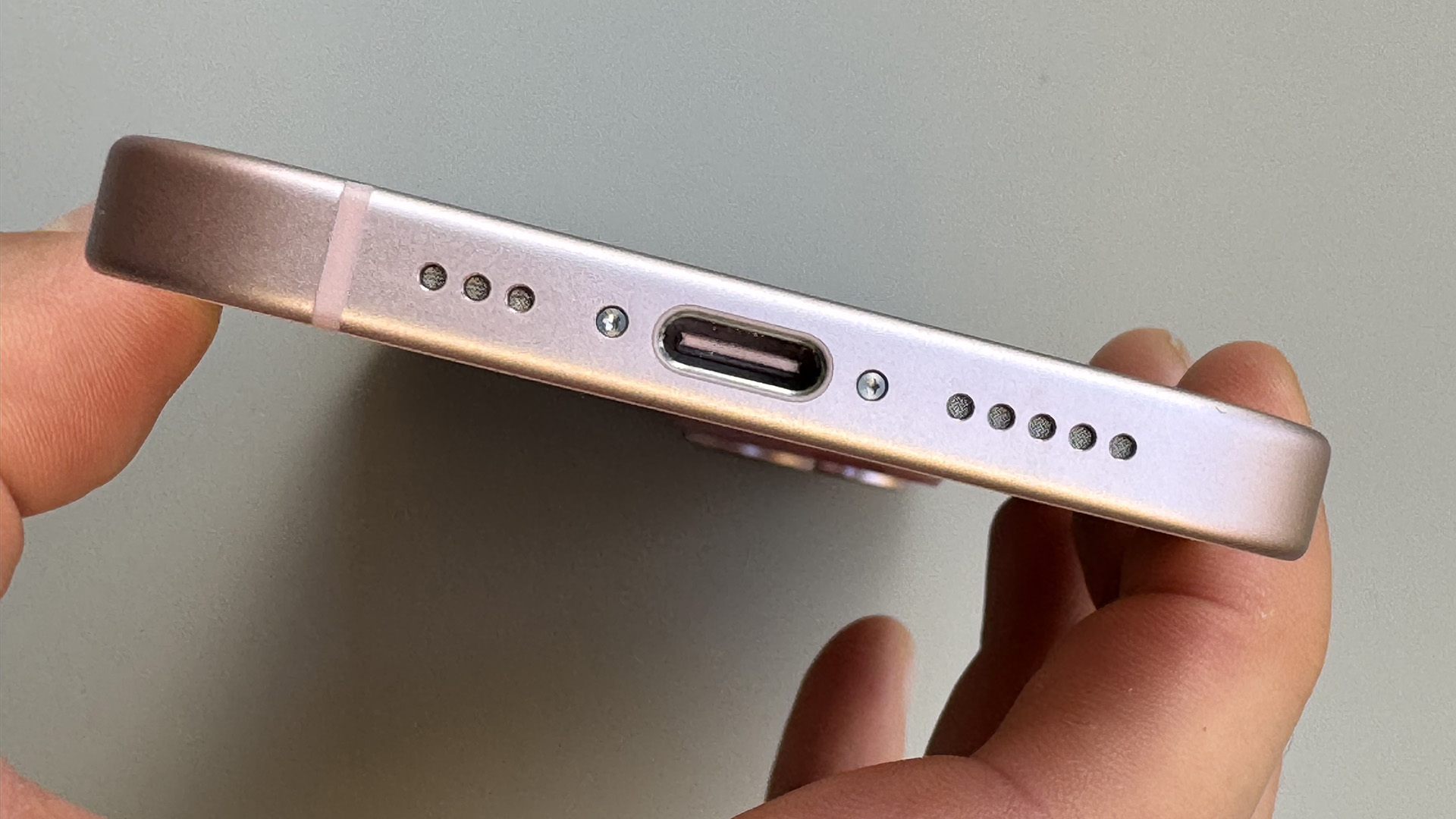
For regular use that 48MP downscales the image to 24MP, but by using just the centre of the sensor, it’s possible to offer a 2x telephoto view at 24MP as well. This means that while there are only two cameras on the back of the iPhone 15, it is essentially offering you three main focal lengths, and provides a continuous zoom from 0.5x all the way to 2x.
There is a chip update this year too – something that didn’t happen with the iPhone 14. The iPhone 15 gets the A16 Bionic chip that featured in the iPhone 14 Pro, while the iPhone 15 Pro models have moved to an A17 Pro chip.
The one new feature that wasn’t a surprise on the iPhone 15 was the switch from Lightning to USB-C charging. This means that the iPhone uses the same charging connector as every other phone on the market, as well as just about every accessory. With the iPhone’s USB-C port, you can even use it to charge accessories, like the AirPods Pro or your Apple Watch.
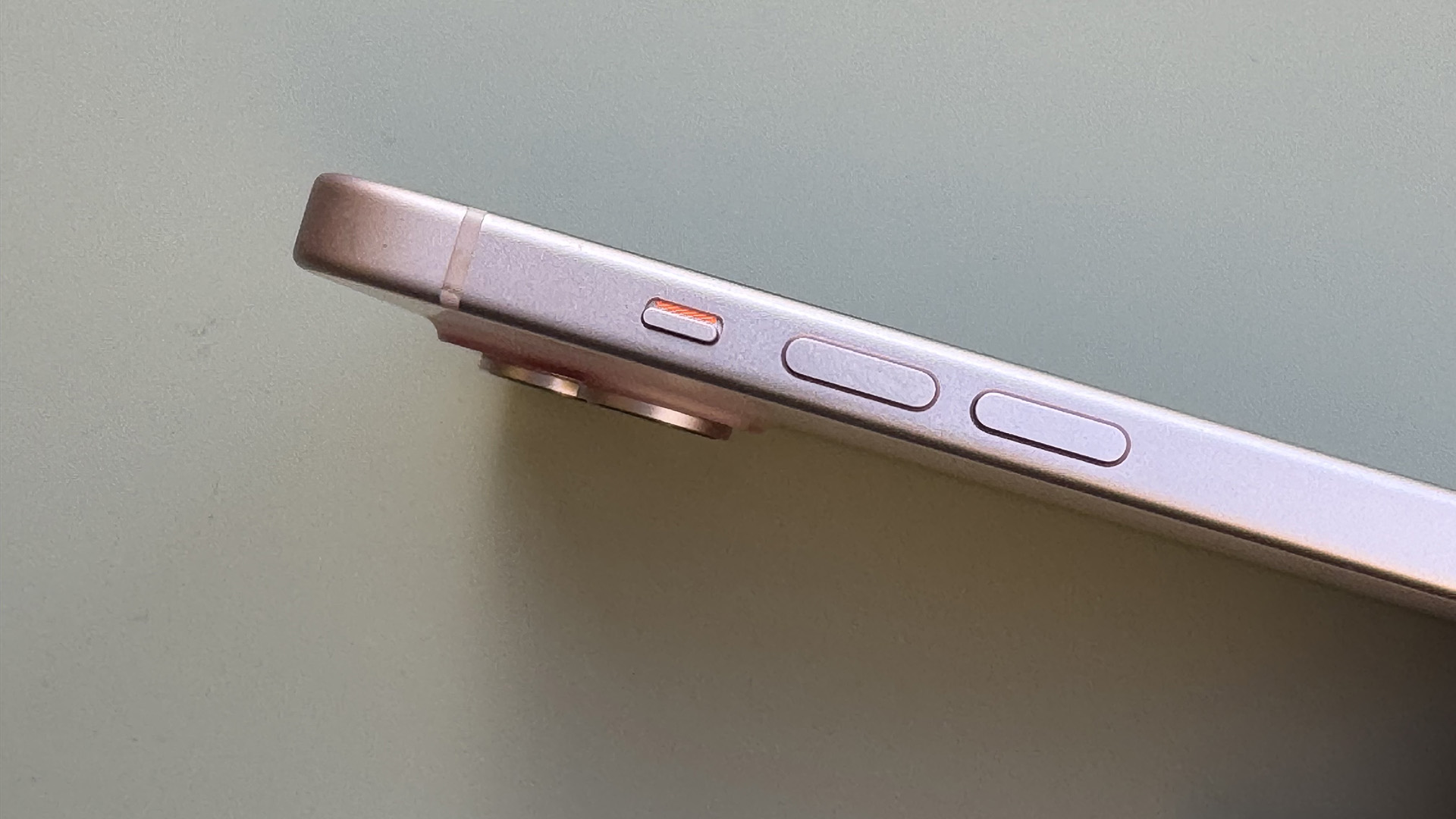
The design of the iPhone 15
The size of the iPhone 15 is very close to the former model, though not identical. The phone is slightly taller by around 1mm, and 0.1mm wider, due to a fractionally bigger screen. It does unfortunately mean that iPhone 14 cases won’t fit the new model properly, especially if they are hard cases.
Getting technical, the rear glass is now colour-infused which leaves a more matte finish rather than the gloss look. While the aluminium frame is more contoured at the edges, making the transition from side to front or back smoother. All this results in the phone looking and feeling more premium in your hand. The Apple logo on the back is also now colour matched too.
Talking of colours, the iPhone 15 comes in a new set of five shades. Even the black looks slightly lighter than before, due to the colour-infused glass. This year’s colours are definitely more muted, from the yellow and green to the very light blue. Perhaps the coolest of colours this year though has to be the pink. It’s certainly still quite muted – rather than a strong Barbie pink – but with the matching coloured band it looks pretty cool. If you wanted something stronger, you can get the Apple Silicone case for it in Guava, which has a deeper pink vibe.
There’s no action button here, unlike the Pro models, so the iPhone 15 still features a switch on the side for the ringer. While I wouldn’t be surprised if this is a change for the next model, I don’t feel it’s a big loss here. There’s something quite reassuring about that physical mute switch for me.

iPhone 15 display
There’s lots of good things to say about the new display on the iPhone 15 but some users have been disappointed that it hasn’t gone further. This new Super Retina XDR display is brighter than ever. It offers a peak HDR brightness of 1600 nits and a peak outdoor brightness of up to 2000 nits, matching the Pro models.
That 2556 x 1179 pixel, 6.1-inch display gives you a 460 ppi resolution and whether you’re playing games or watching movies, they look incredibly clear and colours are extremely accurate. There’s native support for Dolby Vision here too, so watching content from Apple TV+ or other streaming channels is breathtaking.
Dynamic Island plays a big factor in the display on the iPhone 15 too. As previously mentioned, it was a big success on the iPhone 14 Pro models and it’s really nice to see it on this model. It’s third party apps that really bring the Dynamic Island to life, and it can display everything from live sports scores to how many minutes away your Uber is. One of my new favourites though is the United Airlines app, which gives you gate information and in-flight details in the Dynamic Island.
The only thing that the display doesn’t deliver on is the refresh rate. There’s no ProMotion here, offering up to 120Hz, instead the iPhone is limited to a standard 60Hz. While that’s disappointing for gamers, the lack of ProMotion also means no always-on display. That’s because ProMotion also allows the refresh rate to drop to just 1Hz, preserving battery life when in lock mode.
While I wasn’t expecting full ProMotion with 120Hz here, it would have been nice to have a variable refresh to at least allow the always-on display. Not only does the always-on display look great, it’s also useful for iOS 17’s new Standby mode, which provides a clock display when connected to power in landscape orientation.
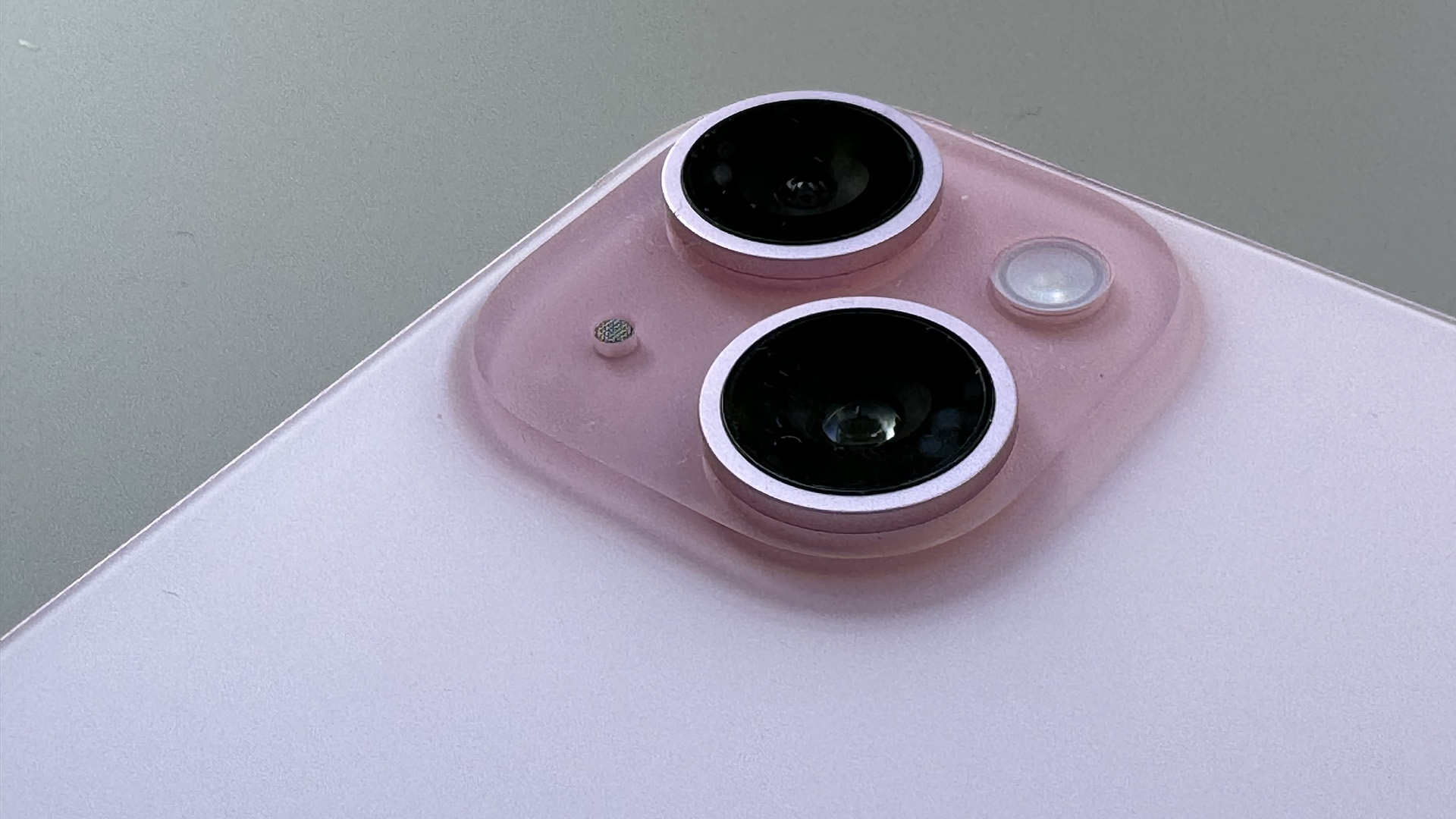
How good is the camera on the iPhone 15?
The camera system in the iPhone 15 has had one of its biggest upgrades to date. On the rear array, the main camera is now a 48-million-pixel device rather than a 12-million-pixel one. This defaults to produce a 24MP image, using the data from two pixels for every one. It also means that it can create a 12MP image with a 2x zoom, by using just the centre of the sensor.
Low light images also output as 12MP files, allowing the camera to use four pixels for every one, to get the most possible data. You can also capture full 48MP images using the HEIF Max format, where you want to really capture every detail – or want to zoom in later.
There’s also the 0.5x ultra-wide camera on the back which has a new lens coating like the Pro models. So from those two cameras you can get a range of 0.5x (13mm equivalent) to 2x (52mm equivalent).
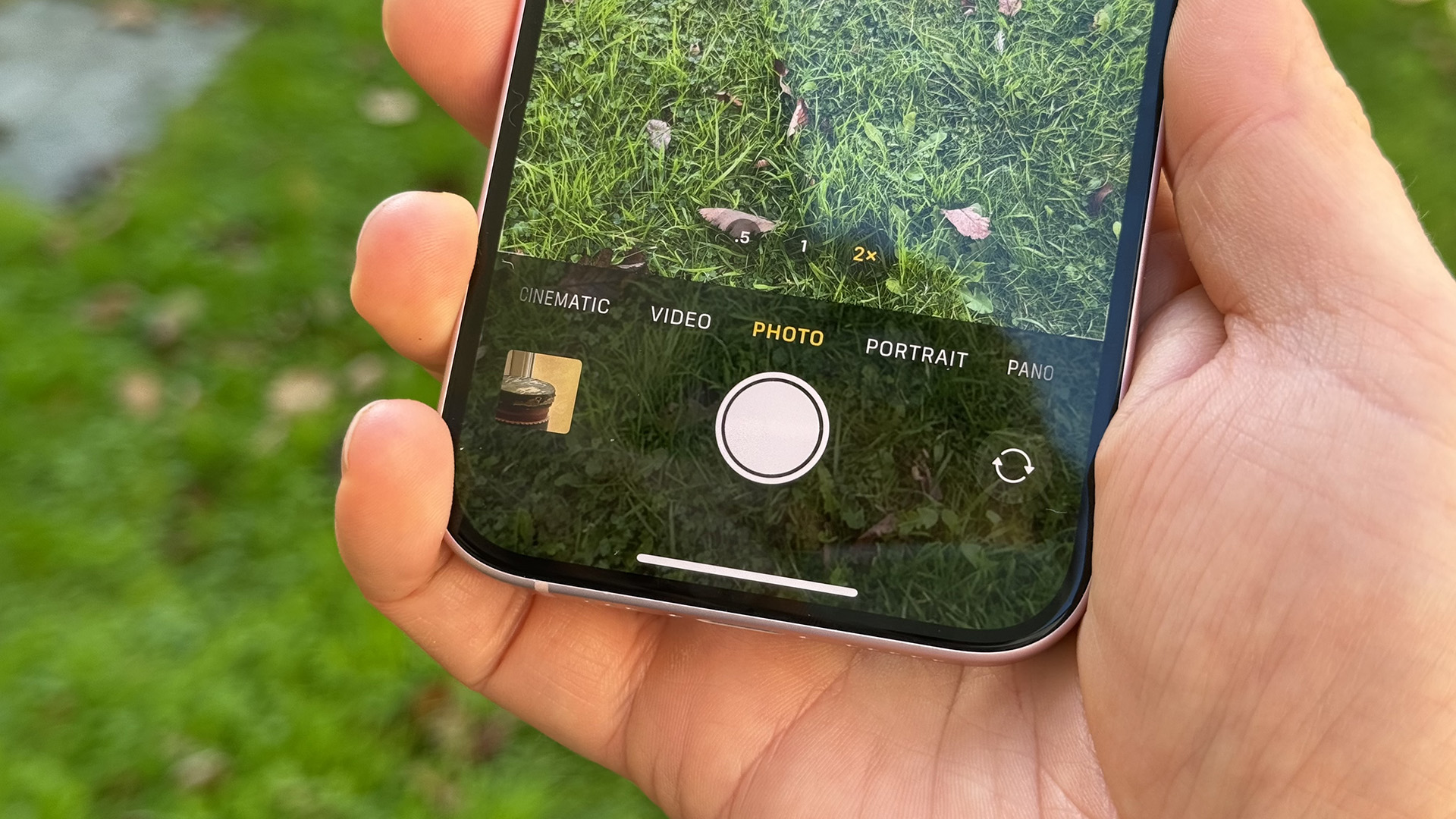
The images that come out of the iPhone 15 are nothing short of impressive. There’s tons of detail, especially from the 48MP images, and the colours look very natural. As standard they can look slightly flatter than out of some Android cameras, but I do prefer the look. It’s also possible to adjust the photographic styles to give you a punchier image as default.
When the 12MP ultra-wide camera struggled for light I did spot some watercolour-like effects, if you really zoomed in, though this was only on a couple of images and doesn’t happen on the main camera.
With the new 2x zoom option, you rarely miss the longer 3x or 5x options of the Pro models, at least when it comes to portraits. You can still get a 10x digital zoom if you really want to go in further, though the quality here does reduce.
What is really handy in the iPhone 15 (and in other models with iOS 17) is the next-generation portrait options. The phone will now automatically save a depth map file when it detects a person or animal (cat or dog) in the shot, allowing you to apply the Portrait mode afterwards. When editing portrait mode shots you can adjust the focus anywhere in the frame, picking different people or objects out.
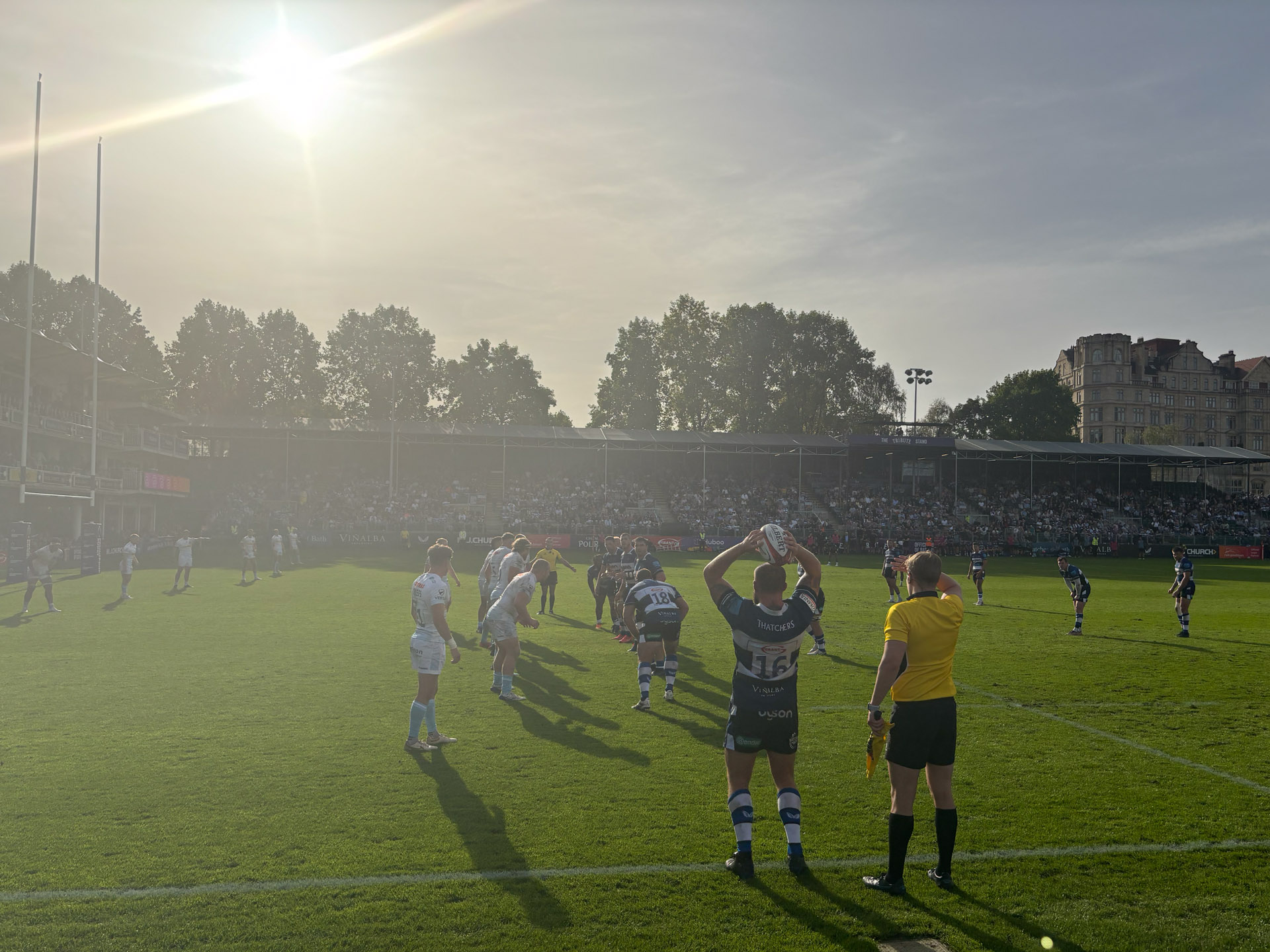






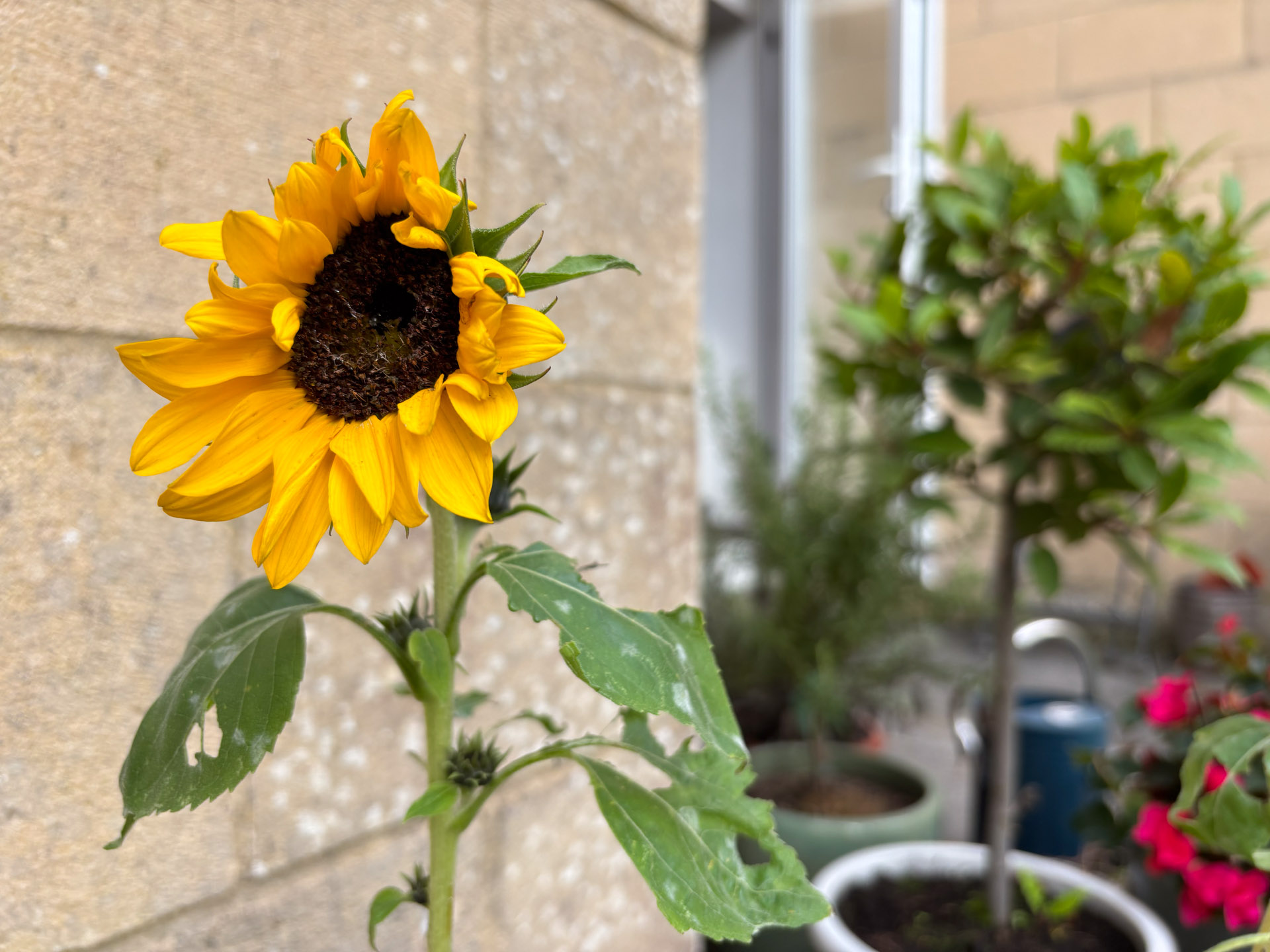

I really like using the portrait mode to shoot other scenes too, such as still life images, to really get that shallow focus effect. It’s a shame that the photo mode doesn’t automatically save the depth map for all images – or at least give you the option to set it that way.
The front camera on the iPhone 15 remains unchanged, as a 12MP f/1.9 device, but also benefits from the new portrait mode options. Using portrait mode on selfies really helps your image to stand out, and is also great if you want to cut out the image or use it as a sticker.
Video options on the iPhone 15 are unchanged, with both 1080P or 4K capture at up to 60fps and both HDR and cinematic options up to 4K. Slow motion video is available in 120fps or 240fps in 1080P. The time lapse mode and night time time lapse are also fun modes to play around with.
What you don’t get here is the Pro video options, like ProRes and LOG colour, but that’s to be expected, as this isn’t a pro phone. You can still get some really impressive video footage from it though, that certainly holds up for amateur usage.

Portrait mode is great for still life images too (on - right)
iPhone 15 performance and battery life
Battery life is described as all-day for the iPhone 15, and is unchanged from the iPhone 14. That means you get up to 20 hours of video (16 streaming) or 80 hours of audio. Realistically that means that you should easily get more than a day's use out of the phone before charging.
In practice, I found the phone was still on 40-50% charge most evenings when I plugged it back in. The only time I struggled to make a full day was after a flight where I played a few hours of Football Manager 2023, which did hit the battery life significantly. That’s to be expected though, and I was still able to carry on using it until the evening.
The A16 Bionic chip in the iPhone 15 is the same one that was used in last year’s iPhone 14 Pro and Pro Max. It’s a combination of 6-core CPU, 5-core GPU and a 16-core neural engine that allows for the incredible image processing and games performance.

Unsurprisingly the iPhone 15 delivers a similar Geekbench score as the iPhone 14 Pro models at around 6300. That’s a big step up from the iPhone 14 and it’s A15 Bionic chip, and similar to a 2019 MacBook Pro – which shows you how fast it really is.
I didn’t experience any real overheating with this phone, and having now installed the latest update (iOS 17.0.3) I don’t suspect I will. The phone does get warmer when using some apps for longer periods of time but nothing you wouldn’t expect from any phone or computer.
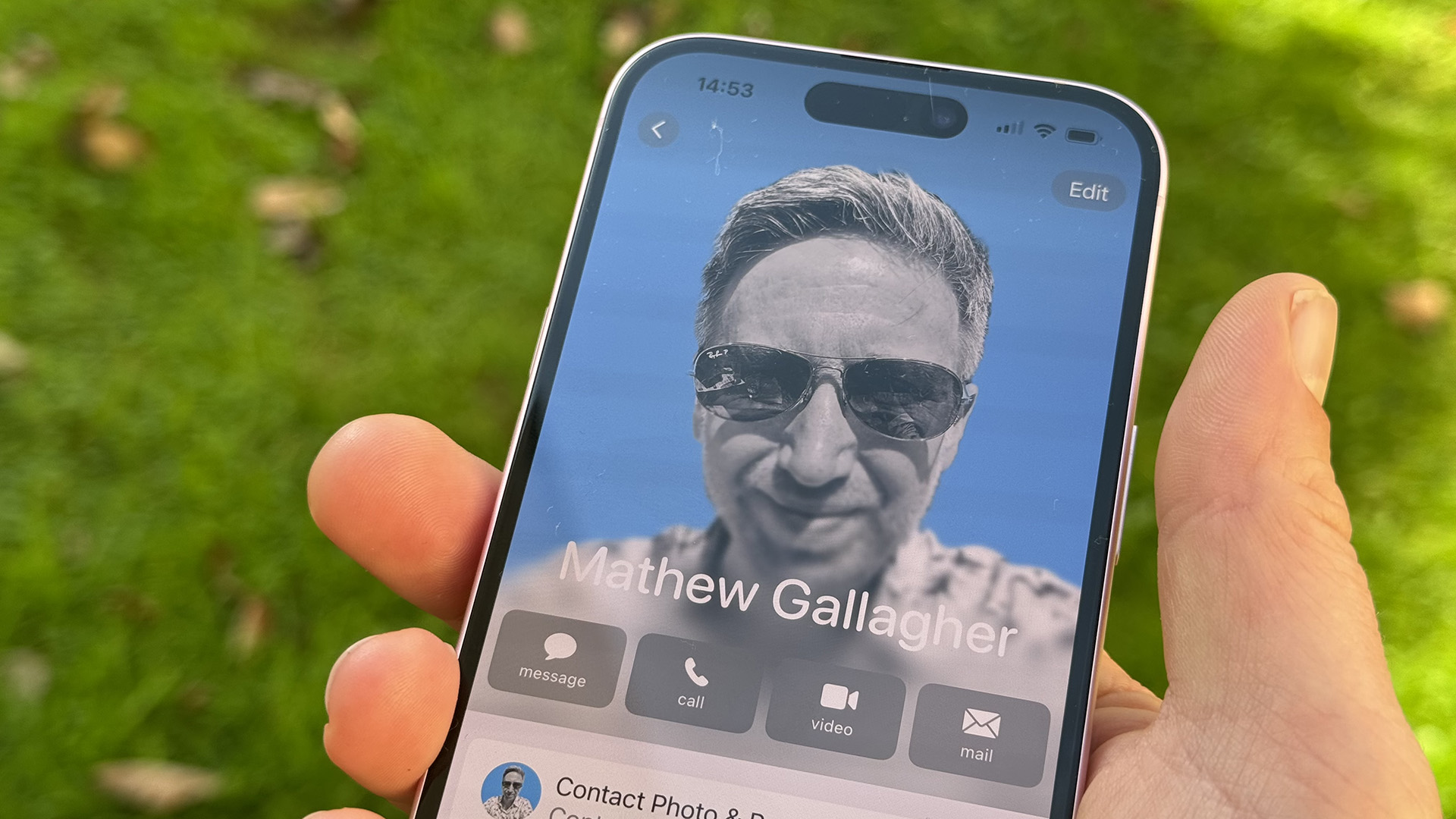
Apple iOS 17
I’ve spoken about some of the nice additions in iOS17 within my iPhone 15 Pro Max review and they apply here too. The addition of the Dynamic Island on this phone means that you can now enjoy some of those visually impressive – and actually useful – notifications on the Island, which is great news.
I hope the touch to share contacts will actually take off and not become a forgotten gimmick, because I really like the feature. In an age where business cards have become a little old fashioned, it’s a great way to quickly share your details without having to type in your number or search for someone’s Instagram or LinkedIn.
iOS 17 also seems to have got better at suggesting images for my lock screen, and has pulled up a few that I would have thought of using from my collection, but now really love. It’s just a slight shame the iPhone 15 doesn’t have the always-on screen so I can enjoy it longer.

Should I buy the iPhone 15?
The iPhone 15 isn’t the best iPhone available – that’s the iPhone 15 Pro Max – but it is the best option for most people. It feels great in the hand, it has a gorgeous display, an extremely powerful processor and graphics chip, and it takes superb pictures.
If you want a bigger screen and longer battery life, the iPhone 15 Plus is going to be your choice. If you want faster refresh and pro camera features, the iPhone 15 Pro is the way to go. But if you want a good, reliable phone that fits in your hand and your pocket, the iPhone 15 is still the best option for the money.
While I’m not saying any iPhone is particularly cheap, compared to other phones on the market you are getting a lot for your money with the iPhone 15. There are already some great contract deals that make it pretty affordable on a monthly basis.
If I was looking to buy a new phone with my own money right now, I would certainly be considering the iPhone 15 and I know I wouldn’t be disappointed with my choice.

As T3's Editor-in-Chief, Mat Gallagher has his finger on the pulse for the latest advances in technology. He has written about technology since 2003 and after stints in Beijing, Hong Kong and Chicago is now based in the UK. He’s a true lover of gadgets, but especially anything that involves cameras, Apple, electric cars, musical instruments or travel.